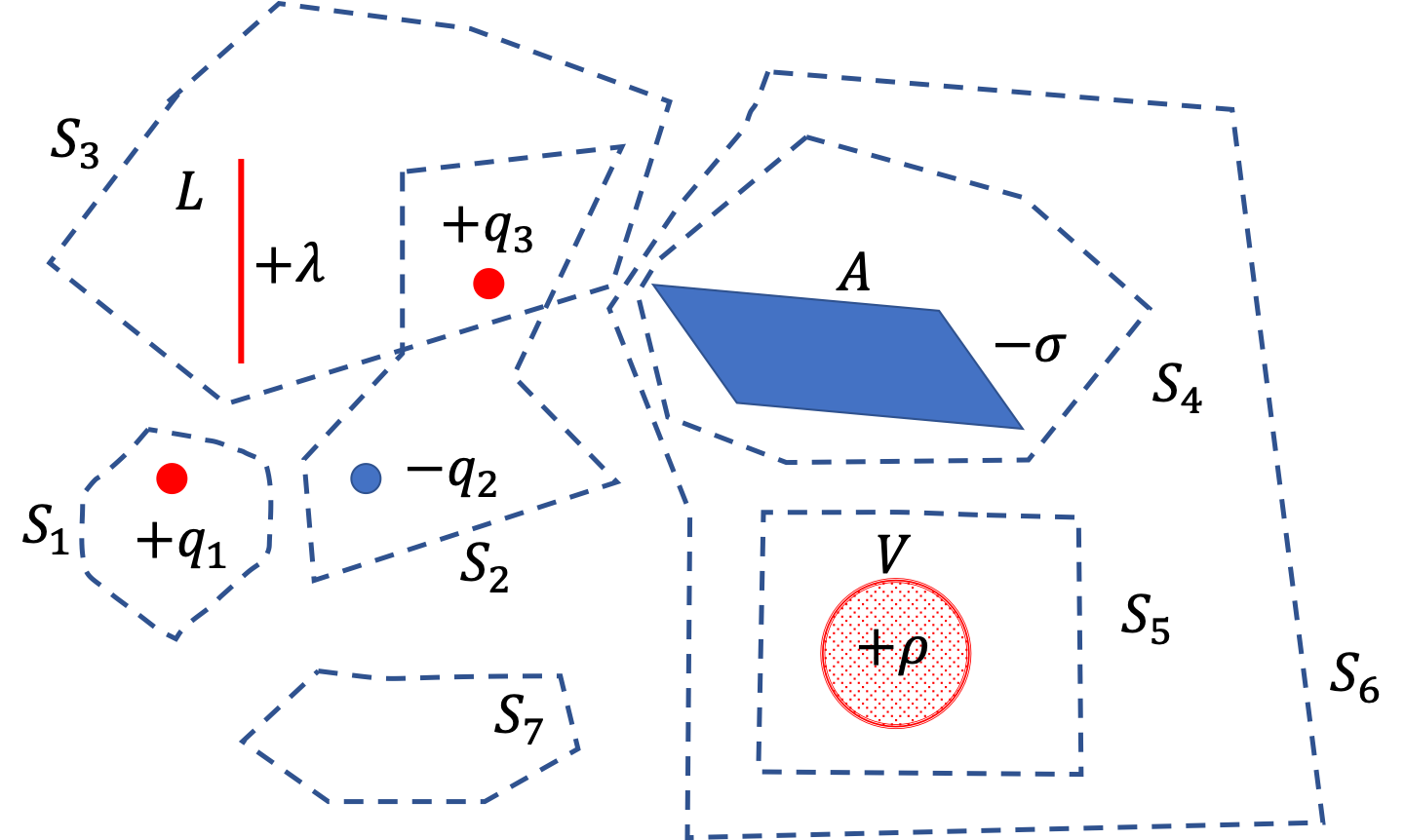Example 30.14. Using Gauss’s Law To Find Electric Flux Through Closed Surfaces From Charges.
Figure below shows a region of space with three point charges and three uniform charge distribution, one a line charge, another a surface charge distribution, and a volume charge distribution. Find electric flux through each of the seven closed surface shown as dashed line.

Answer.
(1) \(\dfrac{q_1}{\epsilon_0}\text{,}\) (2) \(\dfrac{-q_2+q_3}{\epsilon_0} \text{,}\) (3) \(\dfrac{q_3 + \lambda L}{\epsilon_0}\text{,}\) (4) \(\dfrac{-\sigma\, A}{\epsilon_0}\text{,}\) (5) \(\dfrac{\rho\, V}{\epsilon_0}\text{,}\) (6) \(\dfrac{(-\sigma\, A + \rho\, V)}{\epsilon_0} \text{,}\) (7) \(0\text{.}\)
Solution.
In each case, we just need to find how much charge there is inside the enclosing surface.
\begin{align*}
\Phi_{S_1}\amp = \dfrac{q_1}{\epsilon_0}.\\
\Phi_{S_2}\amp = \dfrac{-q_2+q_3}{\epsilon_0}.\\
\Phi_{S_3}\amp = \dfrac{q_3 + \lambda L}{\epsilon_0}.\\
\Phi_{S_4}\amp = \dfrac{-\sigma\, A}{\epsilon_0}.\\
\Phi_{S_5}\amp = \dfrac{\rho\, V}{\epsilon_0}.\\
\Phi_{S_6}\amp = \dfrac{(-\sigma\, A + \rho\, V)}{\epsilon_0}.\\
\Phi_{S_7}\amp = 0.
\end{align*}
Note the answer for \(\Phi_{S_7}\) - it is zero since there is no charge inside the surface.


